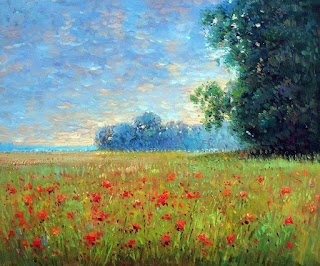Chiaroscuro – This word borrowed from Italian ("light and shade" or "dark") refers to the modelling of volume by boldly contrasting light and shade.
Glass artists need to be very cognisant of light and dark, both in terms of colour selection and in terms of density. A very thick dense glass of a dark shade of any colour will create a much more intense darkness than glass that is thinner and less dense.
In terms of colour, lighter hues go where the sun shines or where the eye is to be drawn. Pastel shades indicate brightness and light. Within some opalescent and art glasses it is possible to find a shade of colour graduating to white or light yellow.
Shading can be achieved by using the white areas to indicate where light is falling. A denser dark glass can be used to indicate where light does not fall, or where very little light can filter through. It can also play the part of negative space.
Sometimes, it is useful to use a monochrome scheme to assist in determining where the light and dark should be, as in this pear:
The contrast between light and dark can be used in several ways. Darkness can indicate depth of field or distance when used in a general landscape. Or, it can be used to bring a foreground out, making other elements more vivid.
The key thing to remember in using stained glass is to not be afraid of dark glasses. They can very useful, even if of very odd hues of colour.
There are at least two major elements in choosing glass: density and clarity. A third is the “hot/cool” effect of colours. The appropriate combination of these elements leads to a panel with bright or hot spots where you want them. You can create a dramatic image or a more restrained one with more gradual gradations of light without obvious bright or dark areas.
Density
Density relates to the amount of light the glass allows through. Clearly black is the most dense glass – allowing no light through. In general, glass can be divided into opalescent and transparent.
Opalescent glasses range from the very dense opaque to less dense translucent glass.
Transparent glasses have a variety of densities too, although almost always less dense than opalescent glass. The density of transparent glasses relates to the intensity of the colour and the texture of the glass.
Colour intensity
The intensity of the colour is related to the amount of light allowed through. The intensity is directly related to the saturation of the colour. A further effect on colour intensity is the thickness of the glass. If you look at a handmade sheet of glass with different thickness on one end to another end, you can see the gradation of the colour and the amount of light that comes through.
Glass Textures
The texture of the glass affects the density of the glass. A smooth glass will have less density as the light passes through without dispersion. As the glass becomes more textured, the light is more dispersed and so appears more dense.





